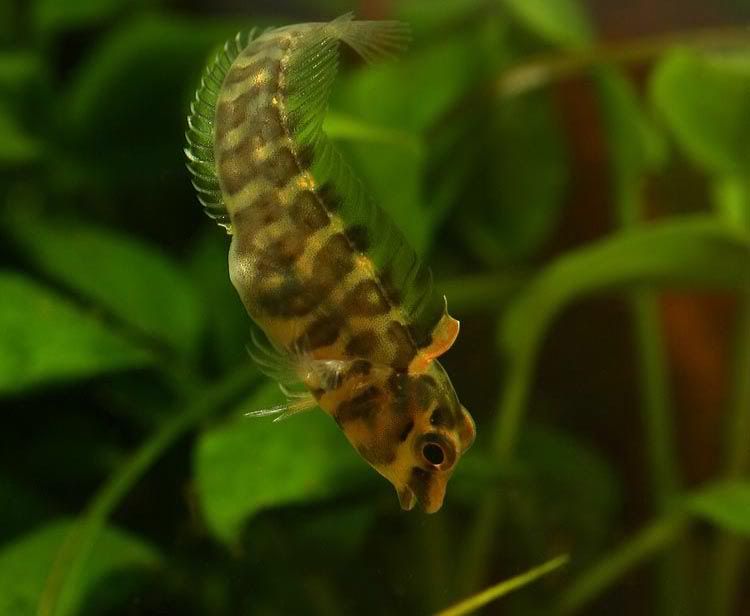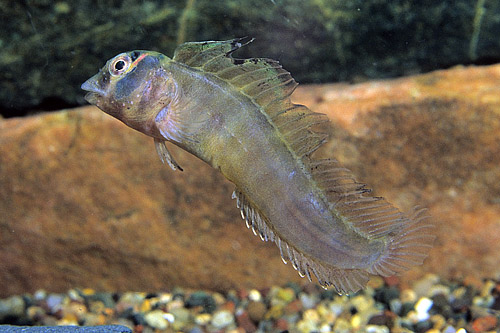Freshwater blenny
River blenny ( Salaria fluviatilis)
The river blenny ( Salaria fluviatilis, Syn: Blennius fluviatilis ) belongs to the family of blennies ( Blenniidae ) and is found in the Mediterranean and in parts of the Atlantic. Unlike other types of blennies he lives in brackish water and penetrates into the mouth areas of rivers.
Features
The river blenny has a slender elongated and laterally flattened body, and like all members of the blennies he has no scales. It reaches a body length of up to 15 centimeters. The head with the terminal mouth is large and has a steep sloping forehead, the eyes are lying far above. Before the eyes of the anterior border is in each case a small, forked tentacle skin. During the spawning season the males carry an additional longitudinal fleshy crest on their heads. The back is olive-brown, the flanks are brown to yellowish and the belly is white or yellowish coloration. The back and sides are usually marked with dark brown, washed crossbar or marbling.
The dorsal fin extends from the head restraint until shortly before the transition to the single-piece tail fin and is not indented. It consists of 12 hard and 17-18 limbs and soft rays. The thread-like pelvic fins are throat constantly, are therefore present in the pectoral fins and consist of a hard and 2-3 soft rays. The anal fin consists of two hard jets and 15 to 20 soft rays. The swim bladder is absent, as in all blennies.
Dissemination
The river blenny is found in the western and north-eastern Mediterranean and on the Atlantic coast between Portugal and Morocco. He is found in the sea and in brackish waters of estuaries of rivers and is the only European Schleimfischart stationary populations in freshwater.
Way of life
River blennies live up on the bottom of the lake shore ( littoral ) at depths of about one meter, in the winter they retreat into deeper regions. They are both free floating as also found in gap hiding. The fish eat small soil invertebrates such as small crustaceans and insect larvae and small fish.
They spawn in the spring and summer from April to July. The males attract the females during this time with pitching in their caves, so they put the eggs here. The 1.0 to 1.2 mm eggs glued the female in packets to the cave ceiling. The males guarding and fanning the spawn multiple females until hatching ( active brood care ) after about 2 weeks at average water temperatures of 20 ° C. Juveniles usually live socially, but with age they become revier forming and aggressive loners.








